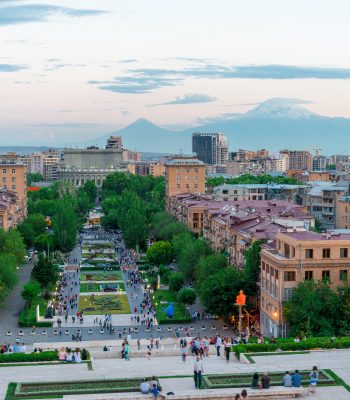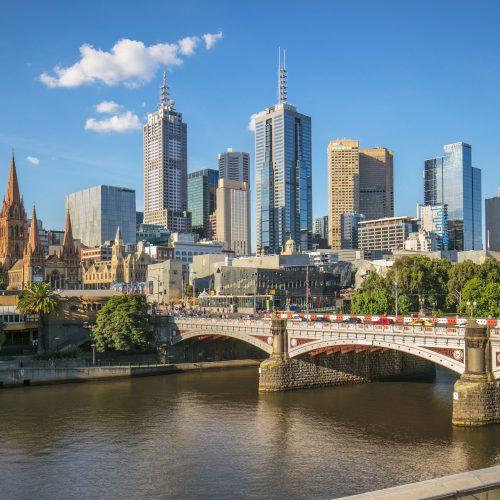Description
Compact cities have many environmental benefits when compared with sprawling areas of low density. The benefits include reduced dependence on cars (hence lowering emissions), smaller energy consumption due to dense development, better and more cost-efficient public transport services and increased overall accessibility through public and active mobility. Resource efficiency is further promoted through the re-use of infrastructure and previously developed land on the back of the regeneration of urban areas. In addition, compact urban development can lead to economic and social benefits that can improve residents’ life quality and productivity, such as by enabling higher mobility for people without access to cars.
Policies of urban compaction involve the promotion of urban regeneration, the revitalisation of town centres, restraint on development in rural areas, and higher-density real-estate development. The promotion of compact cities is further linked to mixed-use development and the concentration of urban development at public transport connection points (see policy option L2).
One way of promoting more compact urban development is to restrain development in rural or peripheral areas of the city. Such development can be controlled through the approval process of planning applications and through effective control and enforcement of any illegal developments.
Other ways of promoting compact urban development include support for urban regeneration and higher density real-estate development. Urban regeneration would normally involve private developers getting involved in brownfield redevelopment projects. This would normally work best when there is a clear partnership between private developers and the municipal authorities and where the municipality, among others, commits to providing strategic visions, adequate infrastructure and transport services. Private developers tend to welcome higher-density real-estate development, and building permits can include obligations to undertake additional investments linked to the decontamination of brownfield sites or to the construction of green or public spaces for the benefit of the wider area.
Many cities consider urban regeneration as an integrated approach beyond environmental aspects; thus, social and inclusive interventions are often incorporated into the projects. Some examples of common social equity and inclusion initiatives are prevention of crime and violence, provision of job training or job-seeking services, and development of microfinance schemes for local SMEs. The social initiatives can be led by city authorities, NGOs or even private sectors through corporate responsibility programmes.

Resource implications and key requirements
Building restrictions at the periphery of a city require effective control and enforcement of building permits. In cities where illegal construction activities are widespread, significant resources and effort must be put in place to regulate the informal sector. However, building restrictions offer revenue-generation opportunities for city authorities. For example, Toronto has secured over US$ 350 million through its density bonusing policies, and in-kind benefits seem likely to have doubled the total value of revenues.[1] Normally, restraining urban sprawl would not require significant capital investments by a city. On the contrary, the containment of urban sprawl should lead to less demand for expanded infrastructure networks and related services.
Urban regeneration and the construction of high-density real estate require massive investment programmes. However, such investments are primarily provided by private developers, and city authorities may only be obliged to finance-related infrastructure upgrades. Nevertheless, the necessary municipal investments may not be trivial and should be carefully considered before embarking on a large-scale urban regeneration programme. City authorities must also be ready to provide comprehensive planning documents and feasibility studies as well as carrying parts of the site preparation costs and development risks linked to issues such as requirements to decontaminate sites before their development.
It should be noted that a large-scale investment programme is not the only option; people-centred small projects can also be considered. Small interventions contribute to inclusive urban regeneration by directly responding to residents' needs and encouraging more active community participation. Also, small projects can often act as a catalyst for other urban revitalisation initiatives after demonstrating the positive impact, and they can be implemented as pilot projects to prototype ideas while mitigating risks.

Potential private sector participation
While the city authority may sit in the driving seat in terms of restraining urban sprawl, the private sector will normally be financing and – to a large extent – driving any urban regeneration efforts and real-estate development. City authorities can explore inclusive procurement opportunities, such as requiring private sector contractors to offer work-based learning opportunities for young people and/or employing other inclusion target groups.

Implementation obstacles and possible solutions
Controlling urban sprawl may meet substantial resistance from developers and local residents. One way to help build a public consensus and clarify the regulation can be to build a greenbelt around the city. This, however, may require the city to acquire land, relocate people and manage the landscaping and maintenance of the greenbelt. In Tirana, Albania’s capital, the Donate a Tree initiative has surpassed its target and triggered donations by residents, companies and international organisations.[2]
Urban regeneration projects require substantial buy-in from local residents and private developers, who may have differing interests. To identify and address residents’ concerns, comprehensive stakeholder engagement and impact assessments are crucial. City authorities should leverage policy instruments, including demand-side subsidies, perpetual use of social housing, and inclusionary zoning to manage the potentially undesirable impact of gentrification and social capital loss.
As for incentivising private-sector participation, the municipal authorities must provide strategic visions and comprehensive planning documents. This provision needs to be combined with a clear commitment to providing the necessary transport solutions and perhaps risk-sharing arrangements linked to issues such as requirements to decontaminate sites prior to their development. For example, the city of Roubaix in France has followed a market-led approach to urban renewal while integrating the issues of social exclusion, housing renewal and economic and cultural development into its regeneration policies.[3]

References
[1] A. Moore (2013), for Institute on Municipal Finance and Governance: “Trading Density for Benefits: Toronto and Vancouver Compared”.
[2] Sustainable Cities (n.d.), “Orbital Forest, a Balance Between the City and Nature Rediscovered”, Sustainable Cities website.
[3] URBED and the Joseph Rowntree Foundation (2006), “Making Connections: Transforming People and Places in Europe. Case Study of Roubaix, Lille (France)”, updated December 2007.















